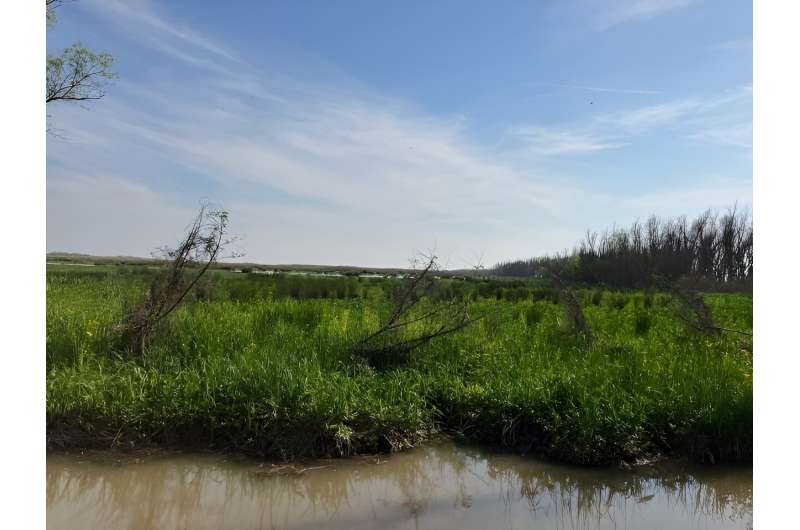This article has been reviewed according to Science X's editorial process and policies. Editors have highlighted the following attributes while ensuring the content's credibility:
fact-checked
trusted source
proofread
Coastal chemistry improves methane modeling

Scientists at Oak Ridge National Laboratory are using a new modeling framework in conjunction with data collected from marshes in the Mississippi Delta to improve predictions of climate-warming methane and nitrous oxide emissions from soils in coastal ecosystems. Their work has been published in Journal of Advances in Modeling Earth Systems.
Underlying processes such as sulfur cycling and influences like salinity in these waterlogged wetland soils drive how quickly organic matter is broken down and how much is converted into methane, a gas 28 times more potent than carbon dioxide at warming the atmosphere.
"We developed this chemical reaction framework that includes a lot of different reactions," said ORNL researcher Benjamin Sulman. "This model established that methane fluxes from bubbles are highly variable and account for a large fraction of total fluctuations."
Incorporating these biogeochemical processes into the land module of the DOE Energy Exascale Earth System Model will depict global methane fluctuations more accurately.
More information: Jiaze Wang et al, Subsurface Redox Interactions Regulate Ebullitive Methane Flux in Heterogeneous Mississippi River Deltaic Wetland, Journal of Advances in Modeling Earth Systems (2024). DOI: 10.1029/2023MS003762
Provided by Oak Ridge National Laboratory





















